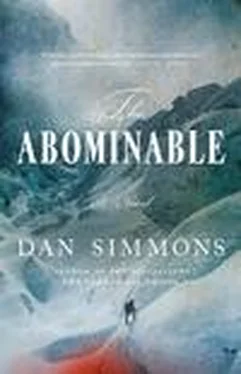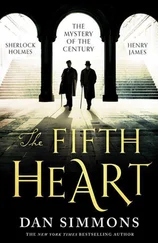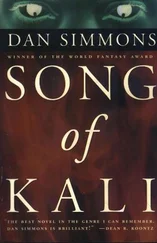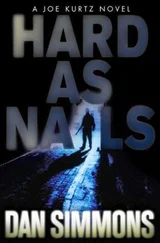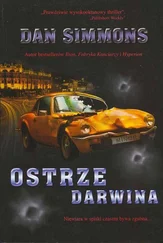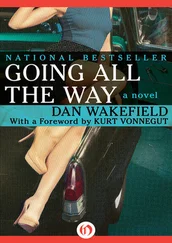“My legs aren’t long enough to reach the crack while hanging from your axe,” J.C. says without unneeded emphasis. This climb has taken a lot out of us already. I know in my heart that Jean-Claude would prefer to try to free-climb this impossible overhang to reach the summit than try to help get me lower to that accursed pipe ledge.
“Make one of your legs longer,” I say and hand him the end of the second 50-foot coil of rope I’ve hauled up the crag. J.C. is better at tying knots than I am.
We get ready, and tied in to the new rope, I have 80 feet of tether between Jean-Claude and me. It’s necessary for the amount of naked rock I have to traverse, 60 feet to the ledge and some slack for up-and-down work, but it would mean that J.C. would have to arrest me after an 80-foot fall. I look at his belay stance. He’s made his left leg longer but only by hanging almost horizontally, one boot on a ridge higher in the crack than I’d been, his body hanging from his left hand gripping the ice axe and his right forearm holding much of his weight along a three-inch-wide ridge he’s found below the crack.
I think of the image that Jean-Claude’s provided: if I fall, he’ll be plucked out of his tenuous hold like a cork out of a wine bottle—or in this case more violently, more like a champagne cork.
But if I’m going to belay him over once I get to the pipe ridge, we need the connection. I think that if I were J.C., in my free right hand I’d have my knife unfolded and ready to cut the belay rope before it goes taut when I fall. Perhaps he does; I can’t see that hand well because of the rock and position of his body.
“Okay,” I say. “Here goes nothing.”
The Deacon and Jean-Claude usually enjoy my more American Americanisms, but this time it’s wasted: the Deacon looks like he’s dozing 250 feet below us, his back to a warm rock and his tweed hat pulled down over his eyes, and Jean-Claude is in no mood for my chirpy vernacular.
I step out of the crack and onto the near-vertical smooth rock face.
I slide only a foot or two before friction stops me, spread-eagled on the rock, shirt and face and belly and balls and thighs and very tensed lower legs begging for friction, most of which is being provided by the toes of my tennis sneakers, which are bent almost at right angles to the rest of my shoe and foot. This is a bit uncomfortable, but not as uncomfortable as falling 250 feet.
I can’t stay there. I begin slipping and sliding to my left, toward the damned pipe ridge, which is about 25 feet lower than I am and perhaps 60 feet away.
My fingers seek holds, even the slightest wrinkle in the rock, but this is an obscenely wrinkle-free rock face. I keep moving to the left, held against the near-vertical cliff just by friction and speed. If you’re fast enough, sometimes gravity doesn’t immediately notice you. My tennis shoes are doing 80 percent of the job of holding me onto the sow’s belly of curved rock.
It’s tricky playing out the rope to Jean-Claude as I crab-shuffle to the left. Most of it is in my rucksack, which keeps trying to pull me back and off the face with just the weight of the extra rope and a few other small things in it, but some I’ve had to loop over my right shoulder to keep playing out to J.C. The coil of rope itself pushes me away from the arresting friction of the cliff, and every time I play out more to Jean-Claude, I slide down a little bit until I’m free to slap my palms and fingers and forearms against the rock again.
I’ve made it a little more than halfway to the pipe ledge when I slip. My body just comes away from a glazed section of the great rock face.
I try to self-arrest madly, my fingers clawing toward any grip, any ridge, any irregularity in the rock, but I keep sliding, slowly at first, and then picking up speed. I’m already below the level of the pipe ledge still far to my left and sliding toward a part of the face that curves in enough below to be called a drop-off. I go off that, I go all the way down to where the Deacon is napping. Dragging J.C. with me if he’s not smart enough to cut the rope with the knife. I think I should scream at him to do just that—he’s only about 40 feet away and shifting in his impossible position to put more weight on his right arm along the thin ridge—but I’m too busy to scream. If he cuts it, he cuts. If he doesn’t, he dies with me. It’ll be decided in seconds.
The slide is cartwheeling to my left and within seconds I’m head down, still spread-eagled, upside down, my face and upper body being scraped bloody across suddenly rougher rock.
Rougher rock.
My bloody fingers become claws, trying to find a ridge big enough to grab and stop this quickening fall and swing me around. My claws lose a fingernail or two but don’t stop or slow me—the upside-down position doesn’t help matters.
I’m already about 20 meters below the face I’d been traversing and I’m picking up speed—the rope hasn’t gone taut yet, the remnant is flying off my shoulder still slack for Jean-Claude, and when it gets to the extra 40 feet or so of tied-on rope in my rucksack, I’ll be over the edge only a few meters ahead of me and in freefall.
Suddenly the toe of my right sneaker finds a deep part of one of these rough wrinkles in the stone just above the drop-off and I slam to a stop. “Ummphh!”
The rucksack tries to keep going over my head but doesn’t pull me off.
For long seconds—hours, maybe—I hang there upside down, still spread-eagled, blood from my hands and torn cheek rivuleting down the rock just below me, and then I begin the slow process of figuring out how to get right side up from that one tennis shoe toehold above me and then what to do next.
The first part offers one real option, and I don’t like it much. Somehow keeping the one toehold, I have to bend the rest of my body into as tight a U as I can, arms and bloody fingers fully extended vertically, and before that ridiculous posture pulls my sneaker out of the fault line and J.C. and me off the face, I have to get a hand jammed in there. It will be a curved-body flailing lunge as my foot comes out and I start sliding again.
Not good alpine form, by anyone’s standards. I’m suddenly happy that the Deacon, still 200 feet below, isn’t watching what very well might be my last seconds.
The upside-down position is just going to sap my energy, blur my thinking with blood rushing to my head, and make me weaker every second I think about this. The toe of the right sneaker may not continue its jammed hold for many more seconds.
I twist myself as hard right across the rock as I can, using the roughness for fingerholds as I bend myself into the tight U. The toe of my sneaker comes out before I want it to and my legs slide free again, nothing to stop me now before the drop-off, but I’ve gained inertia in the U-turn and I scrabble and lunge upward toward the ridge my foot has found.
Thanks be to God it’s not just one narrow ridge but an actual fissure, deep enough to accommodate both hands jammed into it, and as I hang head-up vertical again, my hands deep in the fissure, even my sneakers finding some toeholds on the rough rock below where my head had been a few seconds earlier, I see that this fissure—about six inches from top to bottom and eighteen inches or more deep—keeps running to the left all the way to a spot about 25 feet beneath the pipe ledge. The horizontal crack even accommodatingly climbs a bit toward the end, getting me closer to the pipe ledge.
I hear Jean-Claude shouting down—the curve of the face is hiding me from him: “Jake! Jake?”
“I’m fine!” I shout back as loudly as I can. An echo returns from surrounding crags.
Am I fine? I can shinny my way left using my hands in this crack, but there’s a better alpine way.
Читать дальше
